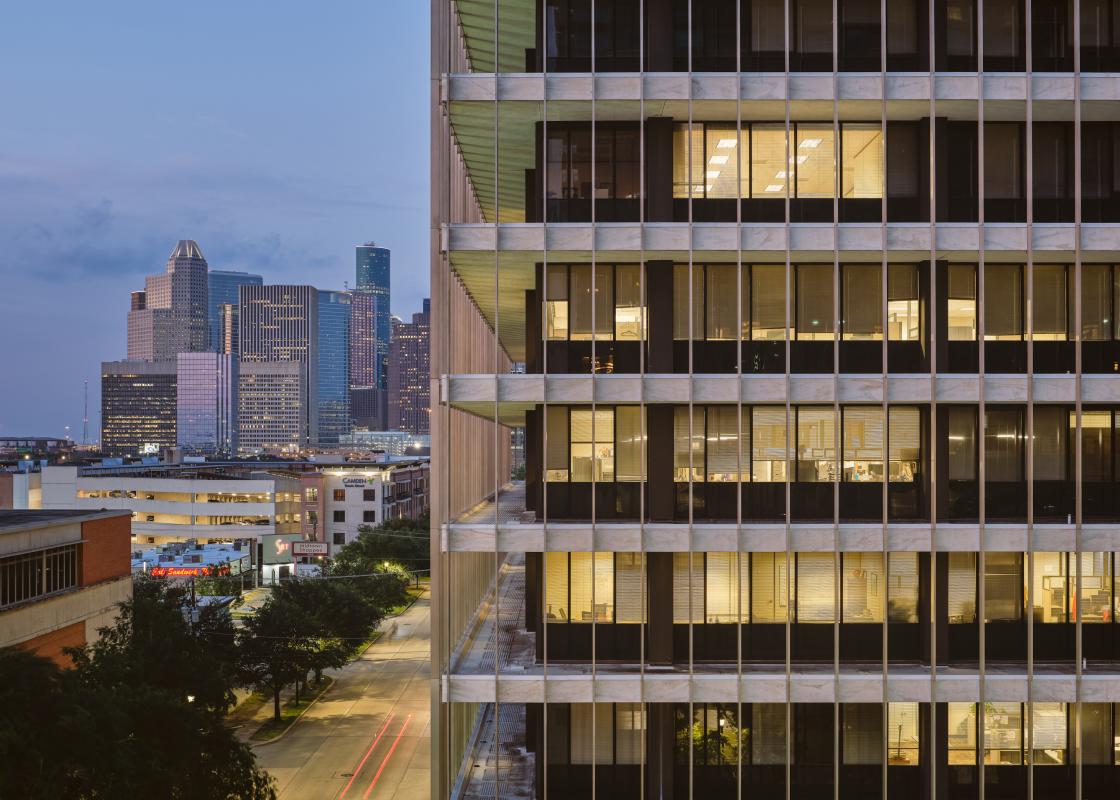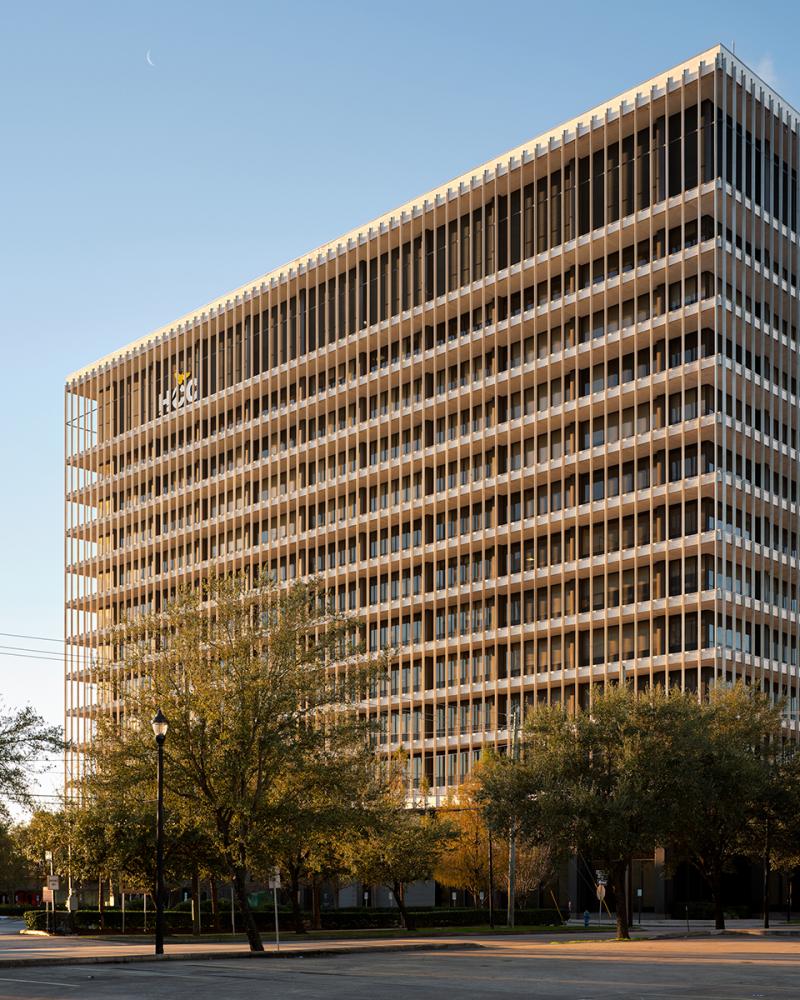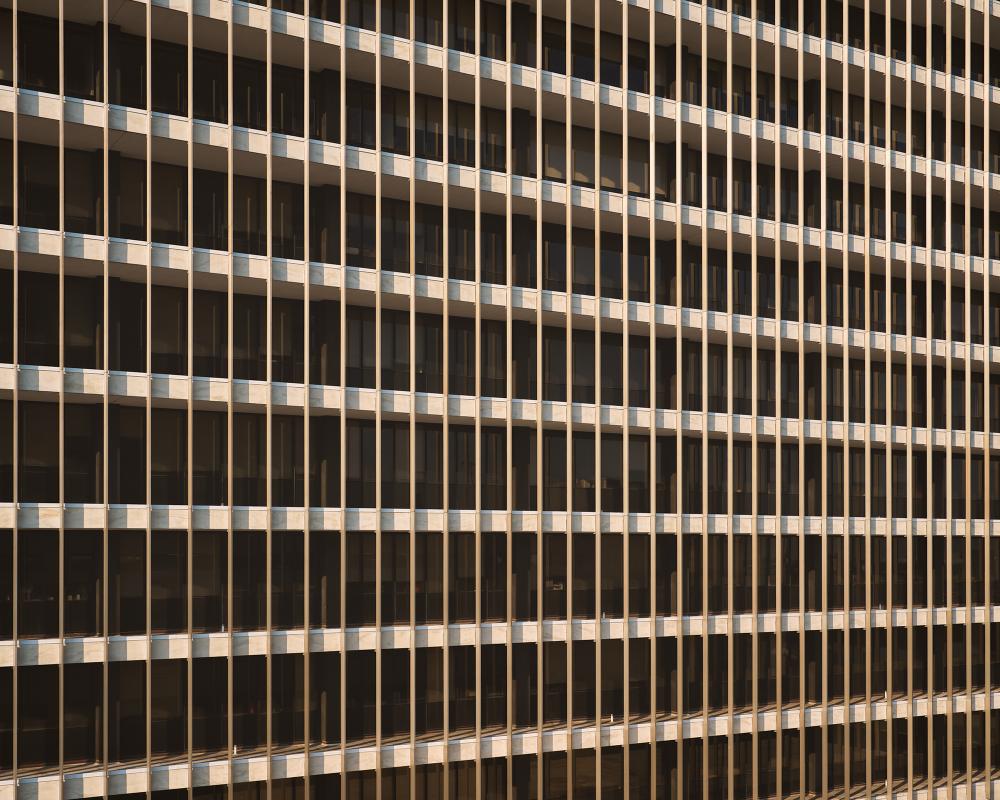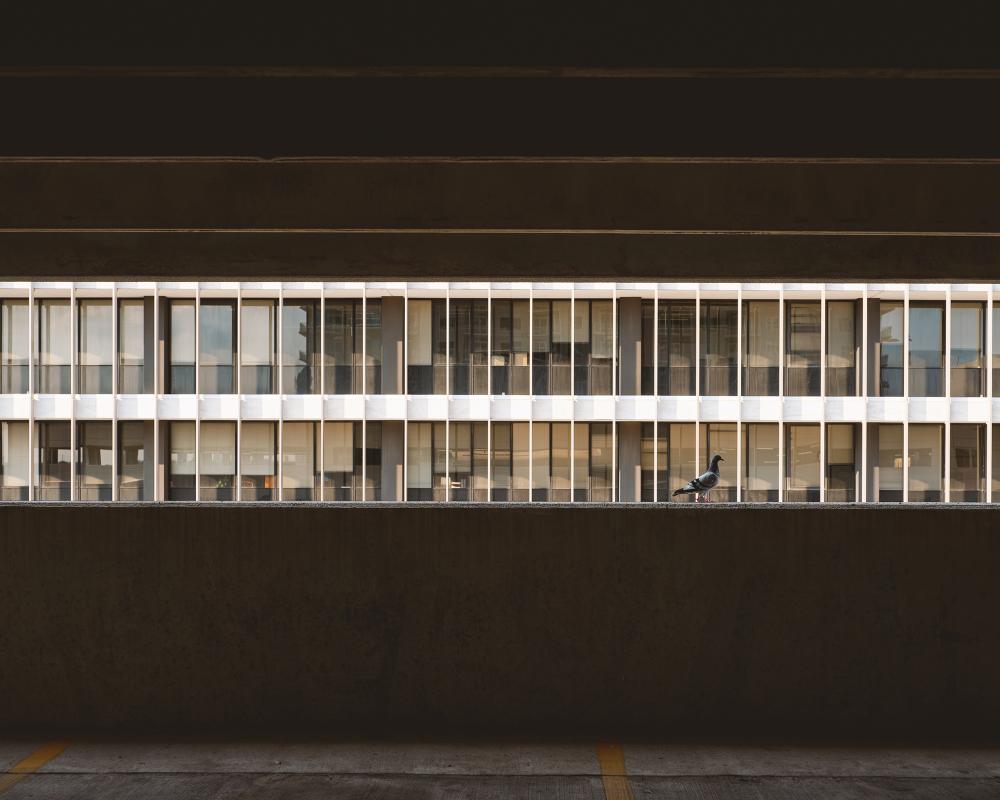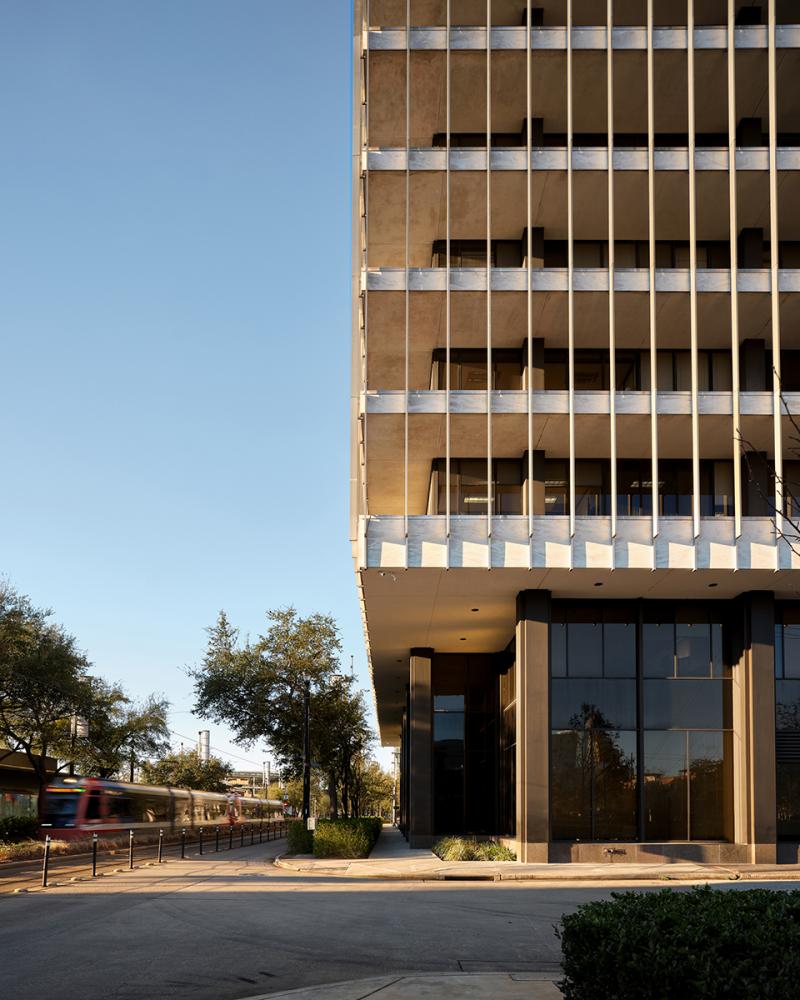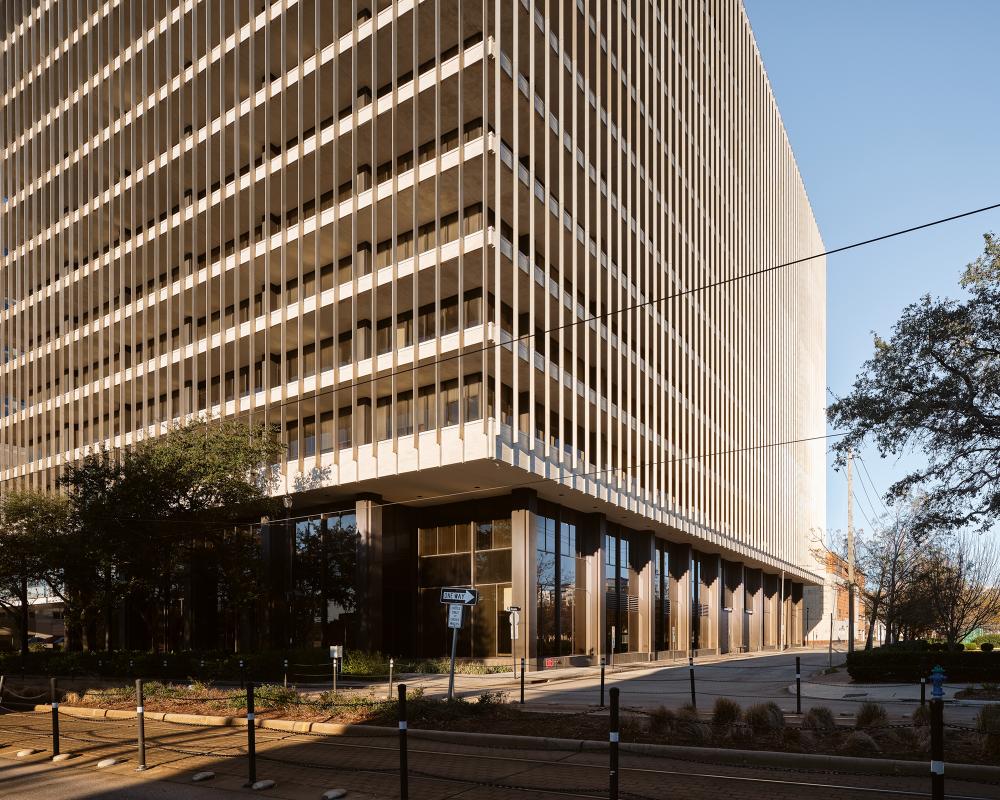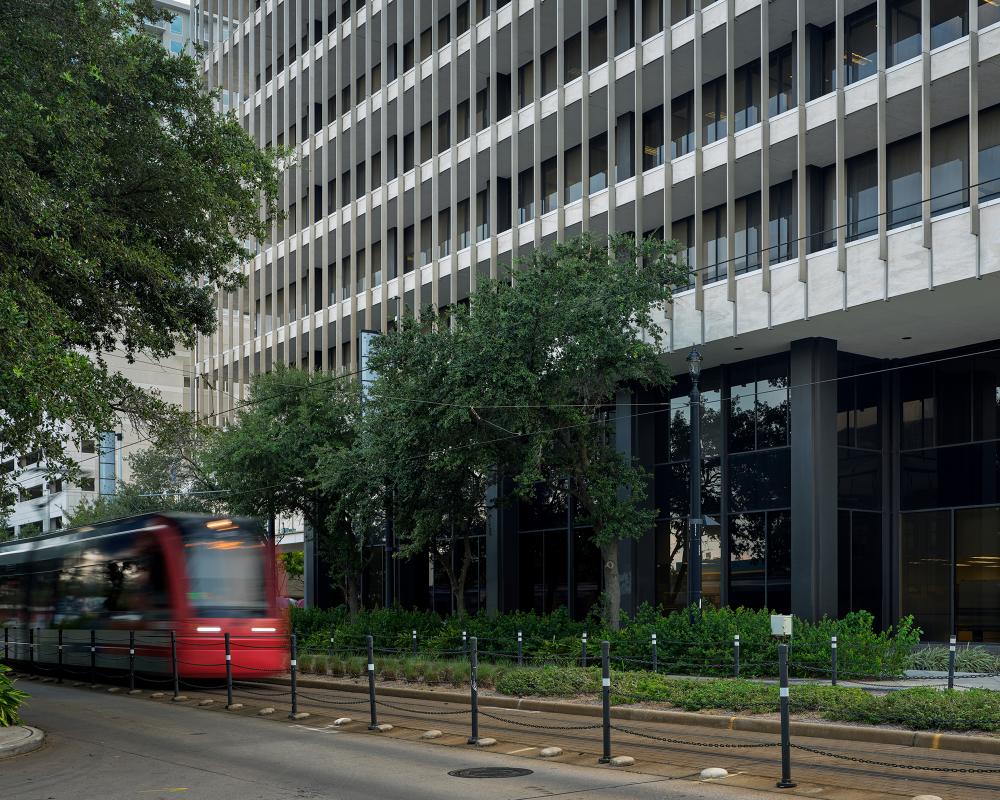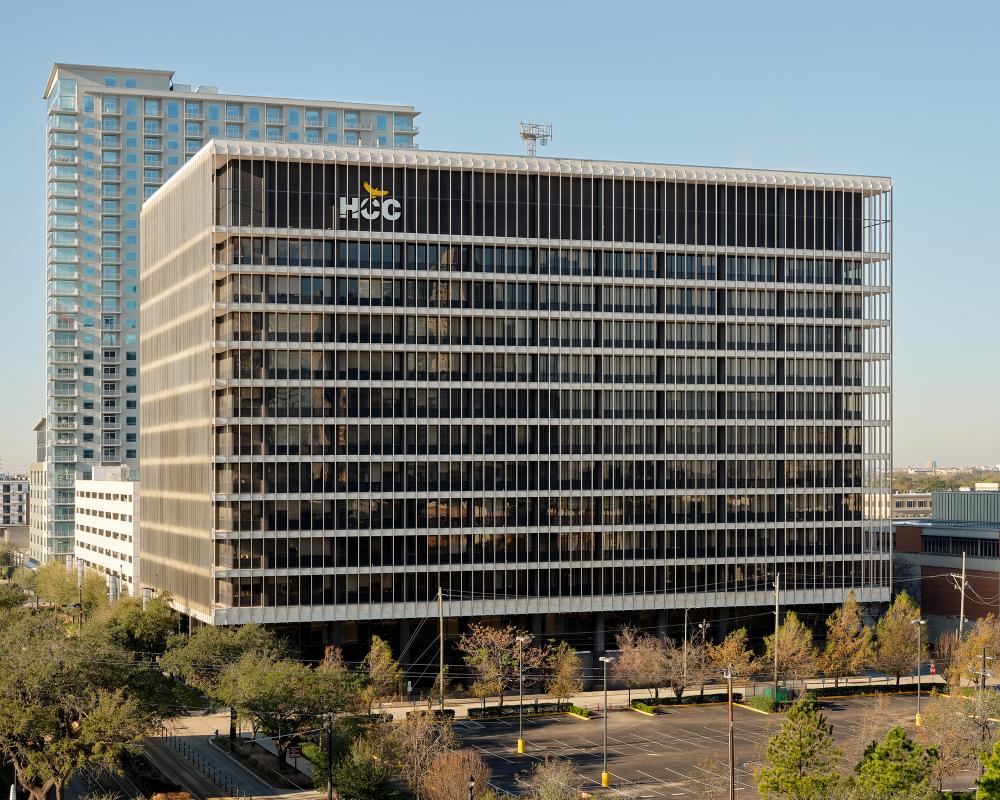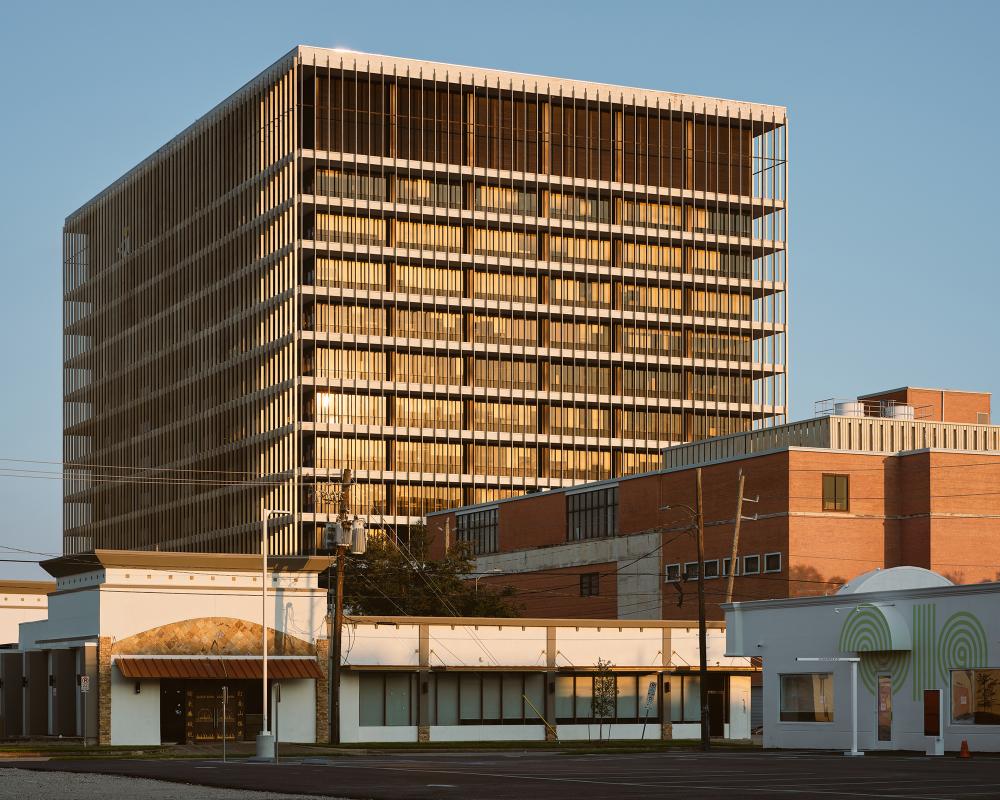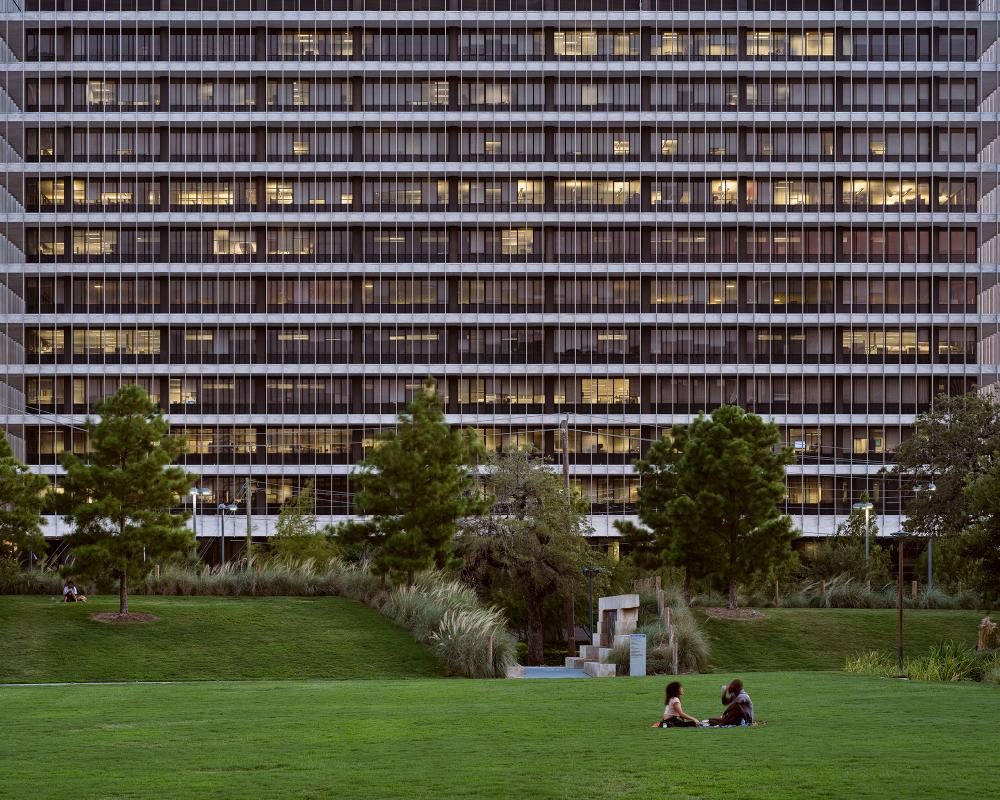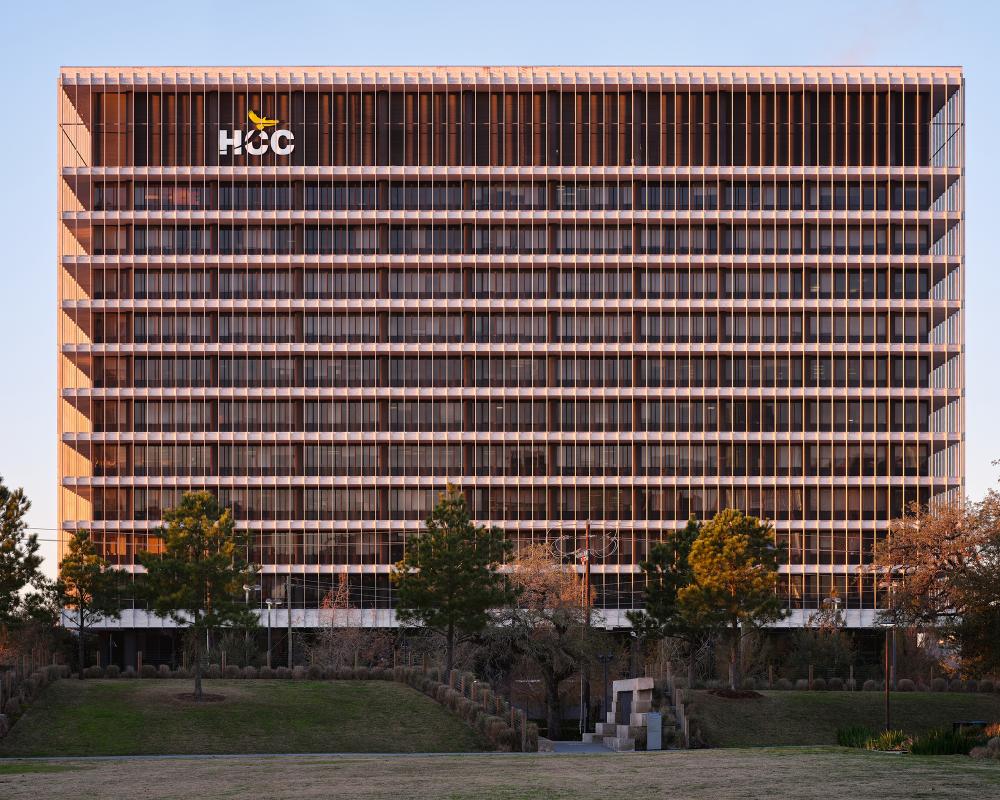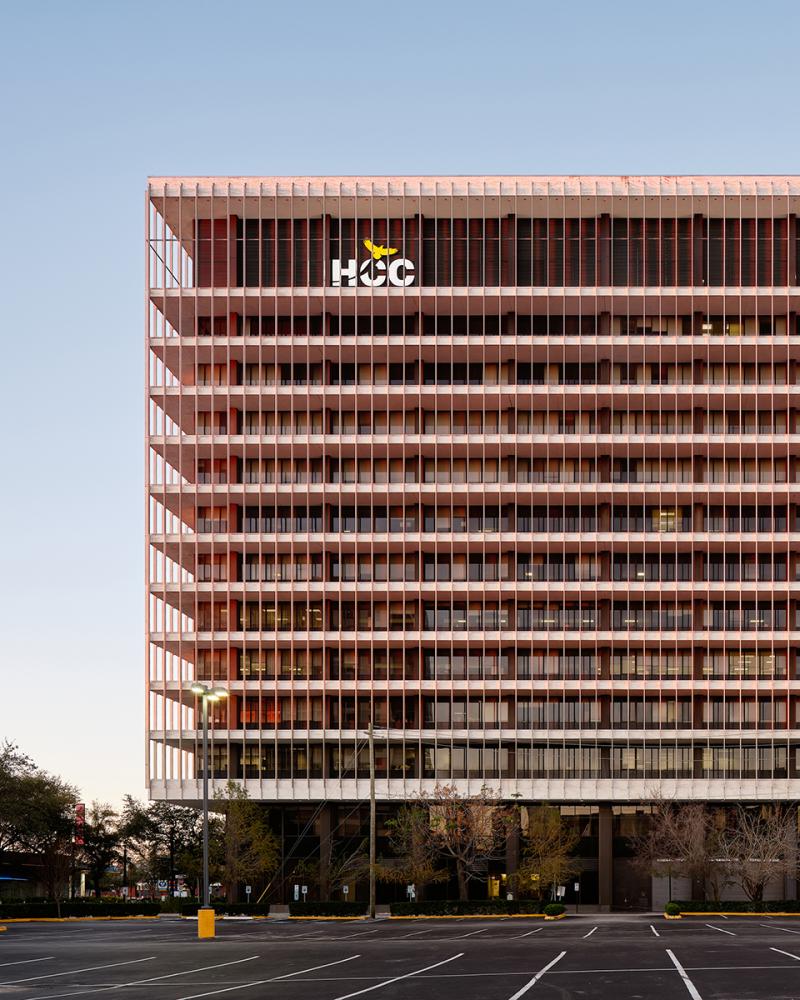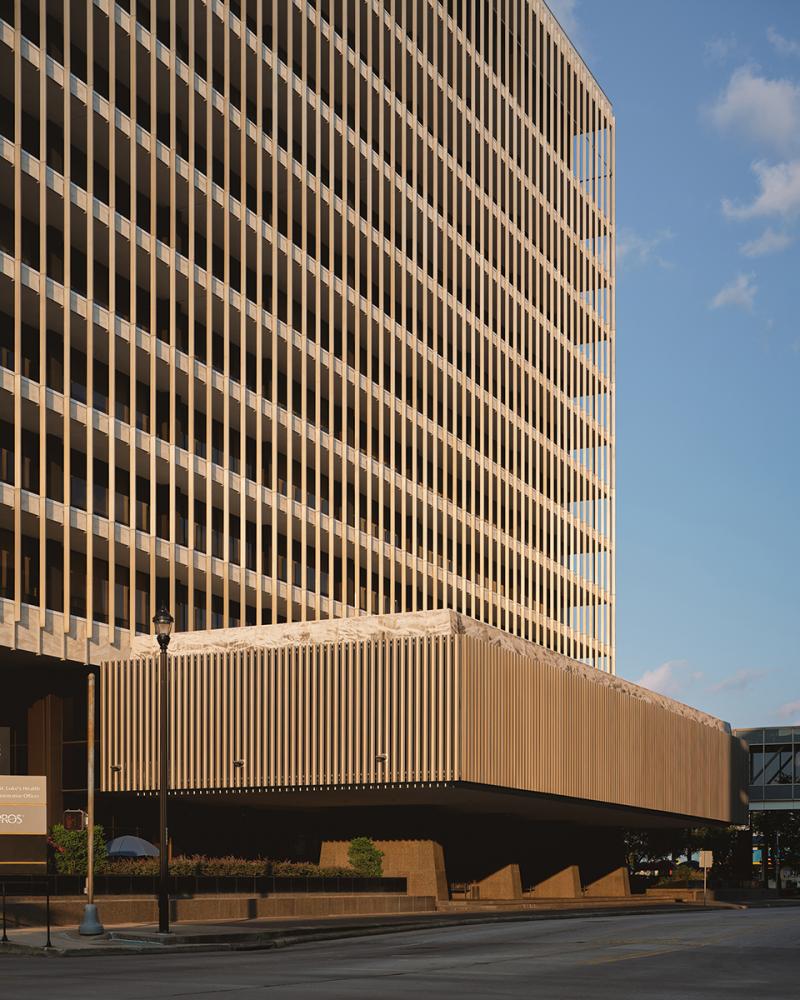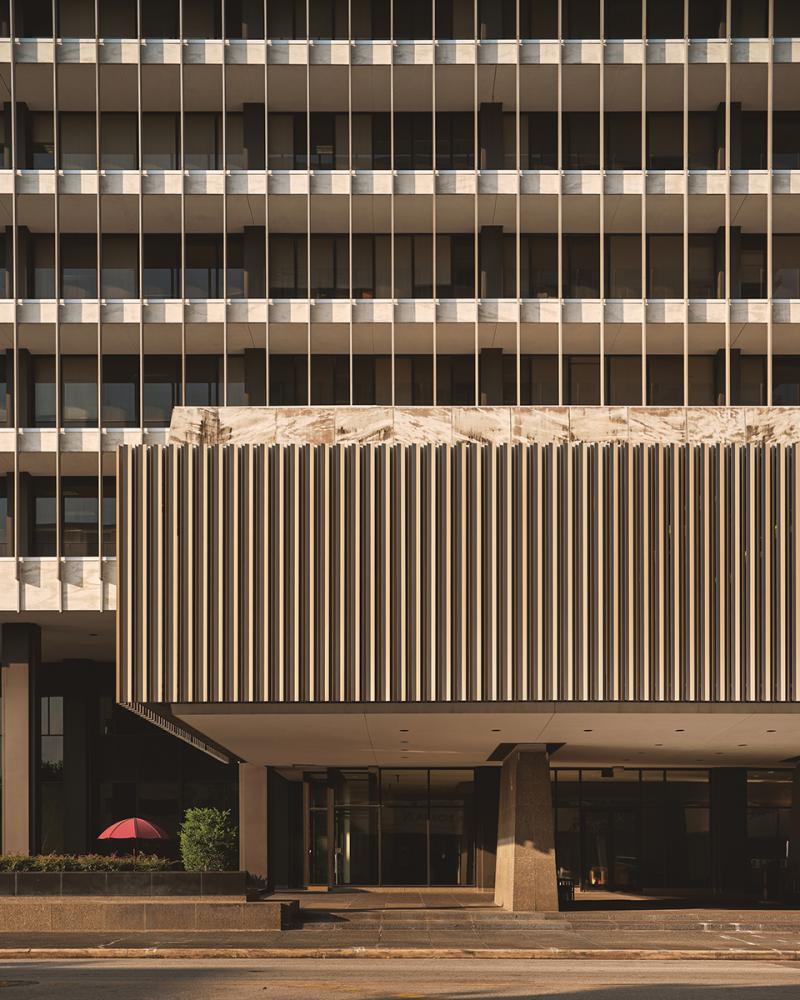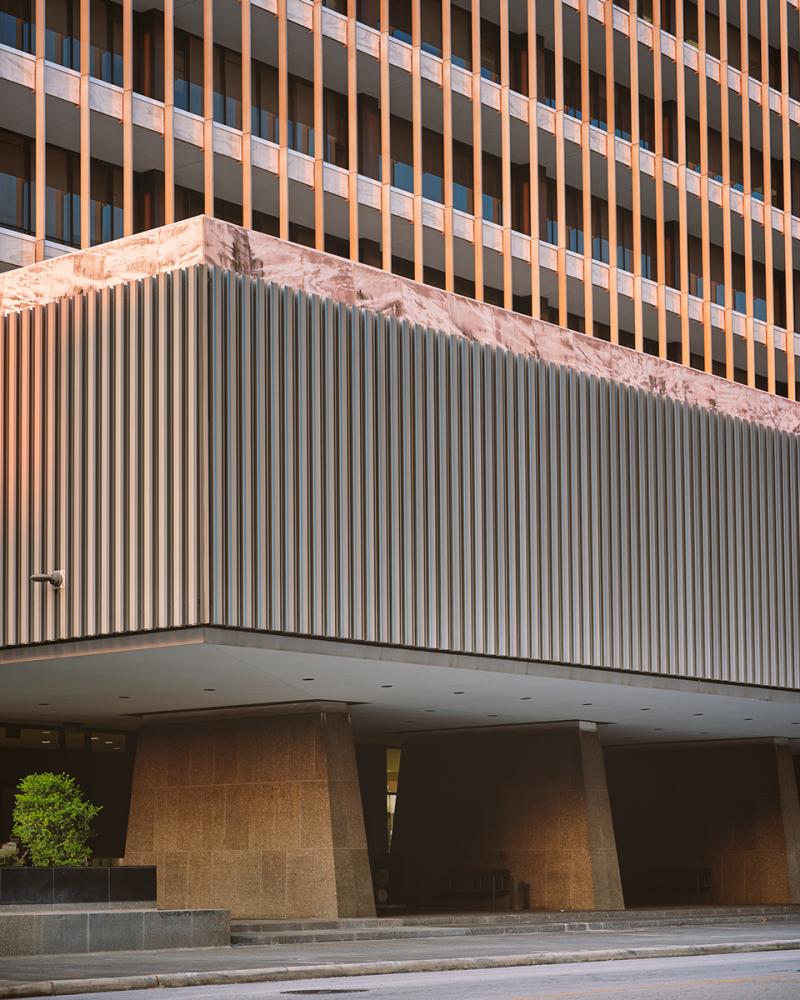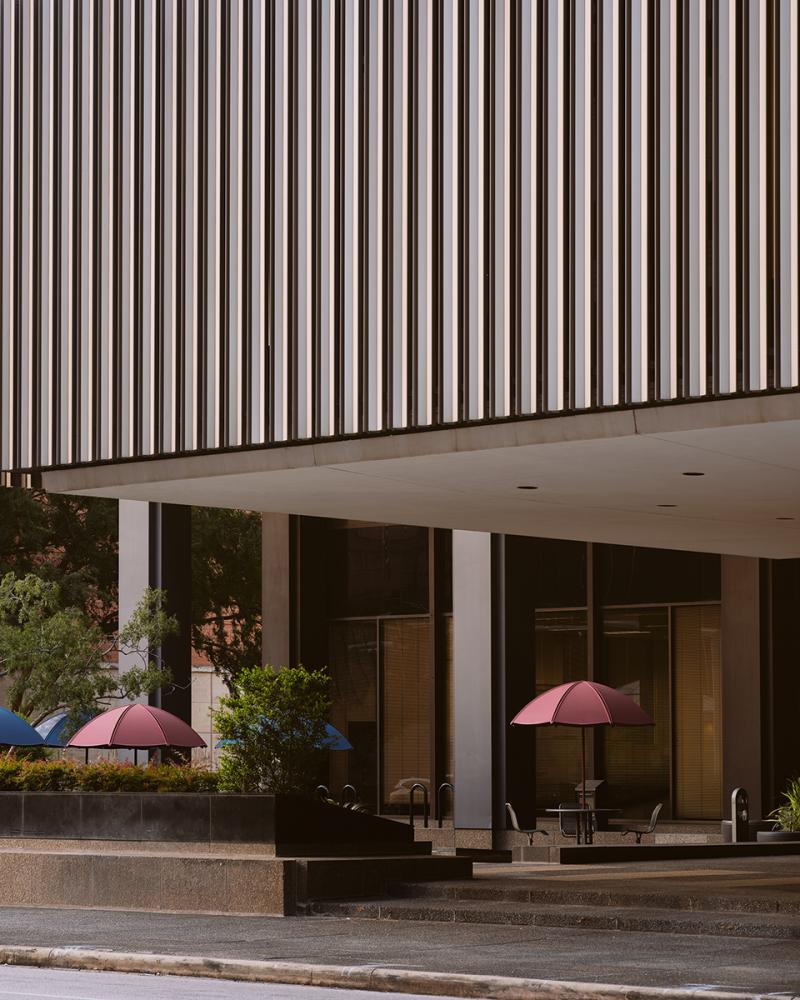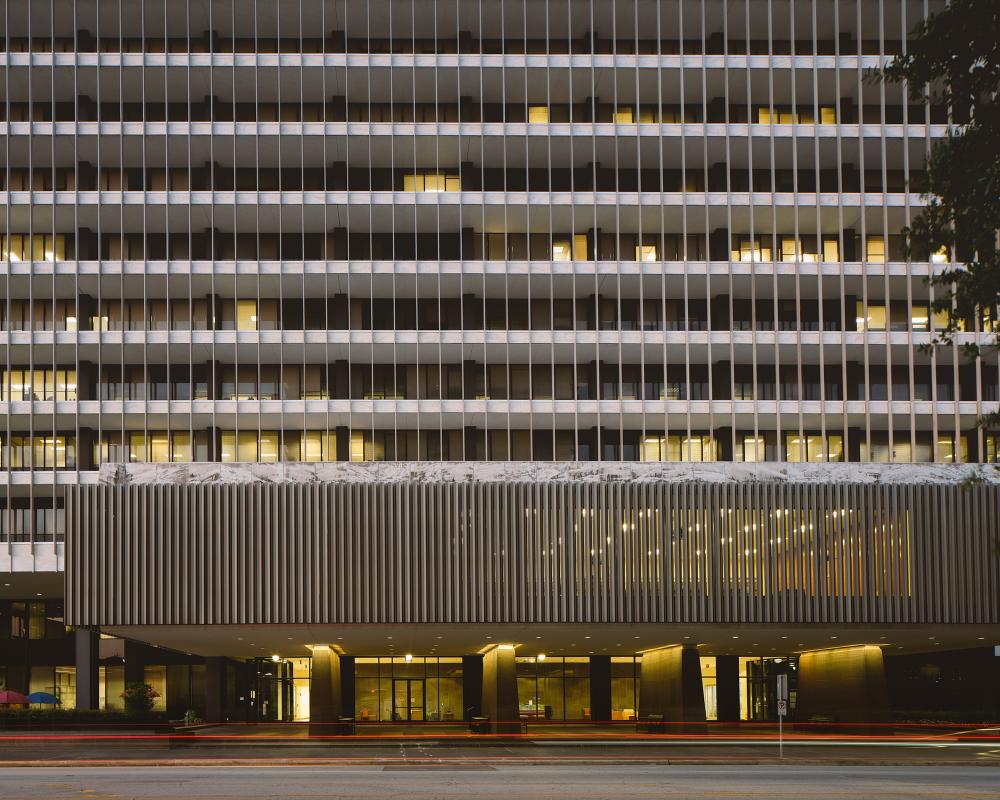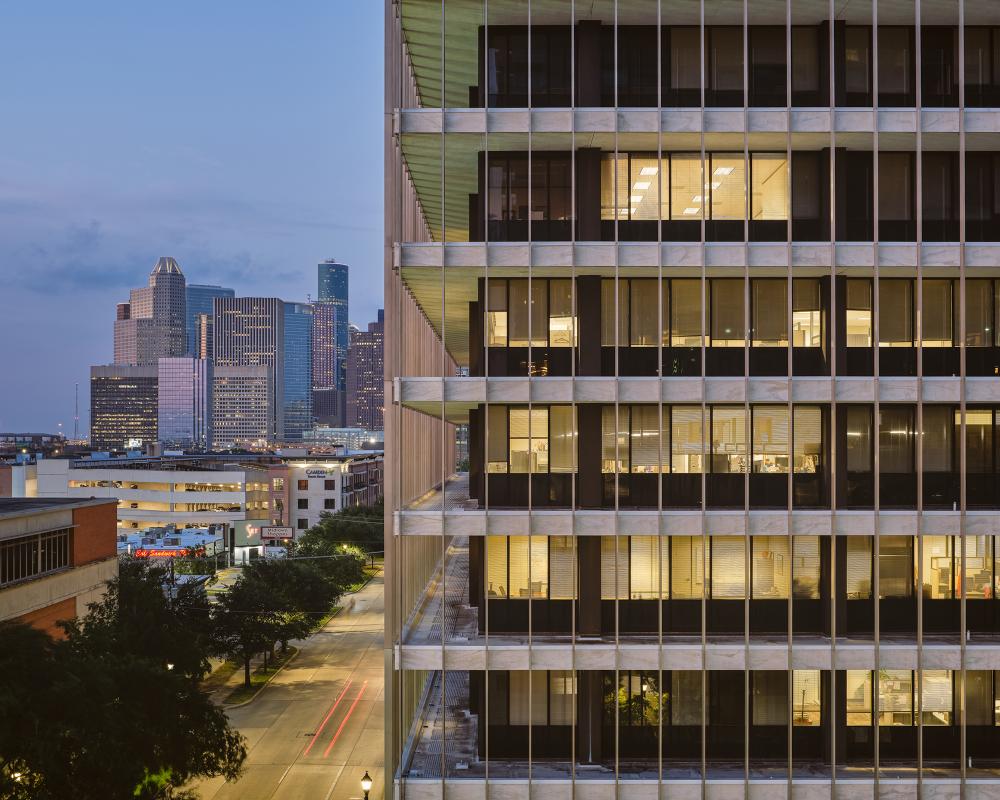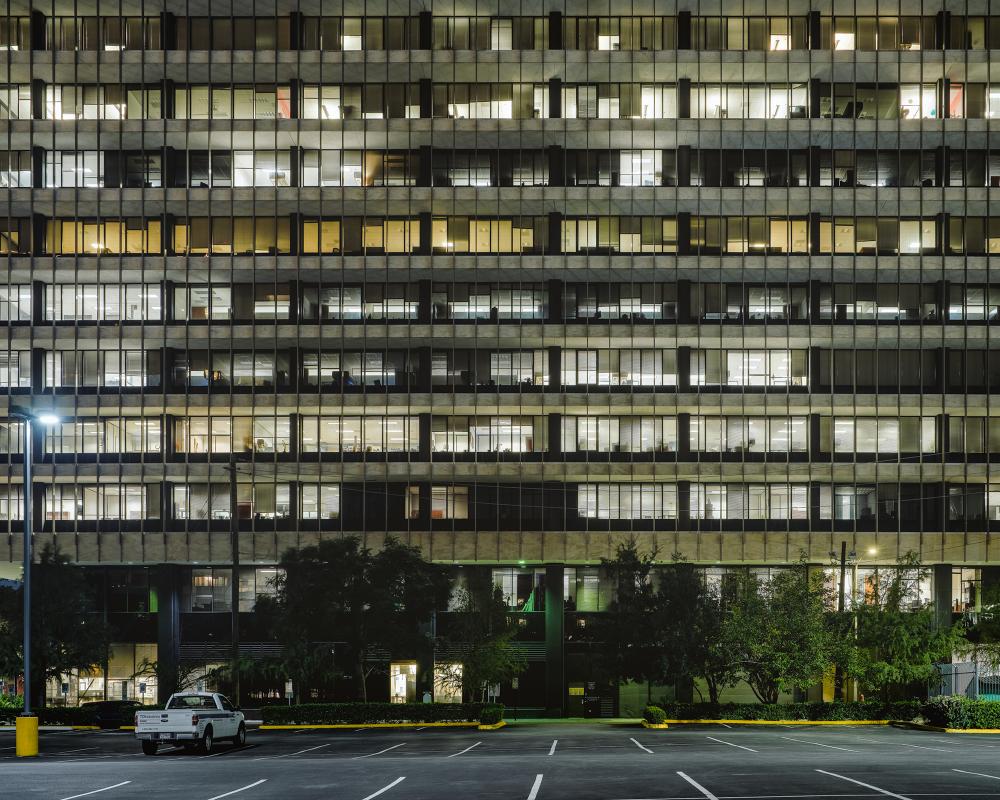Use the slideshow to view Furmansky's photographs. If viewing on a computer, clicking the image will open the slideshow in a shadow box gallery.
I’m always narrowly avoiding a car crash when I drive by the squat tower at 3100 Main Street. It’s an absolute chunk of a building and it distracts my eyes. And yet it hovers gracefully. This feat is the result of architectural design: The floor plates extend outwards, creating thin flat trays, and then those slabs are lined with light verticals on all four facades. The resulting screen appears in tension, as if each floor is suspended from above. Each individual member doesn’t do much shading by itself but seen in perspective they pile up to be almost fully opaque. I haven’t (yet) seen an image of the interior, but I imagine the effect to be similar there. This floating trick is further enhanced by the dark glass, storefront, and columns, which “recesses back” from the white horizontals and outer verticals. It’s really something.
Designed by George Pierce-Abel B. Pierce and Wilson, Morris, Crain & Anderson, the building was completed in 1965, the same year the Astrodome opened. (It too was designed by Wilson, Morris, Crain & Anderson, with Lloyd, Morgan & Jones.) The building was first occupied by the Southern Bell Telephone Company and it’s now the Houston Community College Administration Building, as the signage makes clear. The building is a scaled-up version of SOM’s Warren Petroleum Executive Headquarters in Tulsa, completed in 1957, and shares its slabby expression with the Department of Water and Power Building in Los Angeles, designed by Albert C. Martin and Associates and also finished in 1965. A notable difference is the entrance under a louvered upper floor, heroically lifted by trapezoidal stone-clad supports.
The building comes from a moment when modernism took up the idea of shading, if not its full experiential advantage, as the outer floors are not accessible to the building’s users. (For more on this moment in architectural history, read Ross Wienert’s review of Daniel Barber’s Modern Architecture and Climate: Design before Air Conditioning on Cite Digital last year). Stephen Fox, in the third edition of his Houston Architectural Guide, wrote of the tower:
This 12-story office building seems to float above the Main-Elgin intersection by virtue of its projecting horizontal trays, which shade recessed glass curtain walls. It exemplifies what historian Michelangelo Sabatino describes as the “heat-and-light” approach of 1960s architecture in Houston, using sunlight and shadow to regionalize modern design without, of course, sacrificing the comfort of air-conditioning.
Furmansky’s photos are not the product of a single session; he documented the building on repeated visits and at all times of day. In the morning, the golden light rakes across the fins, during the day the interior fades under shadows, and at night the lights blaze outwards. The series feels more like portraiture. There aren’t many people in the images, though a pigeon makes a surprise appearance. Instead, the building is his subject.
In keeping with Houston’s temporal activation, the tower clears out on nights and weekends. I studied its emptiness from behind my windshield one Sunday last fall while waiting in line for a COVID test; the parking lot immediately to the north of 3100 Main Street was a pop-up drive-through testing site. A few weeks later, I drove back for another test, but the tents and technicians were gone—the facility had been relocated. Still, I idled there with my neck craned towards the intense building, now fifty-six years old, before seeking a swab elsewhere. —Jack Murphy
Leonid Furmansky is a Texas-based architectural photographer. He is driven to document structures that represent the way we live. Leonid's work has been published in the New York Times, Divisare, Texas Architect, Dwell, and ArchDaily. Leonid spends his free time documenting rural and overcrowded cities all while experimenting with film photography.


